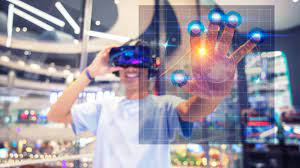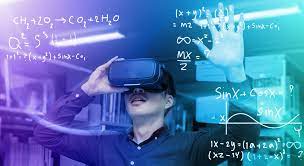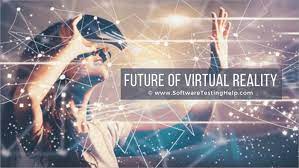In recent years, the integration of virtual reality (VR) technology into education has been nothing short of revolutionary. What was once considered a futuristic concept confined to science fiction has now become a tangible tool transforming learning experiences across various disciplines. Virtual reality offers immersive, interactive environments that engage students in ways previously unimaginable, making learning more dynamic, memorable, and effective. Let’s delve into the remarkable rise of VR in education and how it’s reshaping the landscape of learning.
Enhanced Engagement and Immersion:

One of the most significant advantages of virtual reality in education is its ability to enhance engagement and immersion. Traditional teaching methods often struggle to captivate students’ attention, leading to disengagement and passive learning. However, VR transports learners into virtual worlds where they can interact with content, manipulate objects, and explore concepts firsthand. Whether it’s dissecting a virtual frog, exploring ancient civilizations, or conducting virtual experiments in a laboratory, students are actively involved in their learning, fostering deeper understanding and retention.
Personalized Learning Experiences:

Another key benefit of VR in education is its capacity to provide personalized learning experiences. Every student has unique learning preferences, strengths, and weaknesses. Virtual reality allows educators to tailor instruction to individual needs, accommodating diverse learning styles and abilities. Whether students require additional support or crave more challenging material, VR can adapt to meet their requirements, ensuring that each learner receives a customized educational experience that maximizes their potential.
Breaking Down Geographic Barriers:

Virtual reality transcends geographic barriers, bringing the world into the classroom and expanding students’ horizons. Through VR, students can visit historical landmarks, explore far-flung destinations, and engage with experts from around the globe without ever leaving their seats. This global perspective not only enriches learning but also fosters cultural awareness, empathy, and understanding. Virtual field trips and collaborative projects enable students to connect with peers worldwide, fostering a sense of global citizenship and preparing them for an increasingly interconnected world.
Safe and Controlled Learning Environment:

VR provides a safe and controlled environment for students to experiment, take risks, and learn from their mistakes without real-world consequences. Whether practicing surgical procedures, simulating hazardous environments, or navigating complex scenarios, learners can refine their skills and build confidence in a risk-free setting. This hands-on approach cultivates critical thinking, problem-solving, and decision-making skills essential for success in academic and professional pursuits.
Overcoming Accessibility Challenges:

Virtual reality has the potential to overcome accessibility challenges and create inclusive learning environments for all students. For individuals with disabilities or those unable to participate in traditional educational settings, VR offers alternative avenues for learning and participation. By removing physical barriers and providing customizable interfaces, VR ensures that every student has equal access to educational opportunities, promoting inclusivity and diversity in education.
Challenges and Future Directions:

While the benefits of virtual reality in education are undeniable, challenges such as cost, technical complexity, and integration into existing curricula remain significant hurdles. However, as technology advances and becomes more accessible, these barriers are gradually being overcome. The future of VR in education holds tremendous promise, with ongoing research and innovation poised to further enhance its effectiveness and scalability.
Conclusion:
The rise of virtual reality in education represents a paradigm shift in the way we teach and learn. By leveraging immersive experiences, personalized instruction, and global connectivity, VR has the power to transform learning experiences and unlock the full potential of every student. As educators and innovators continue to explore the possibilities of VR technology, the future of education looks brighter than ever, with limitless opportunities for exploration, discovery, and growth. Embracing virtual reality today is not just about preparing students for tomorrow—it’s about empowering them to shape the future.


